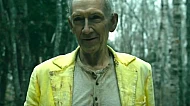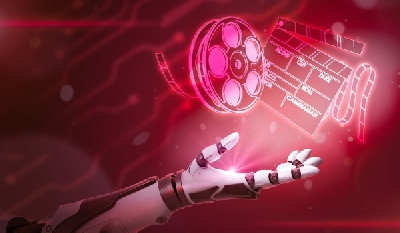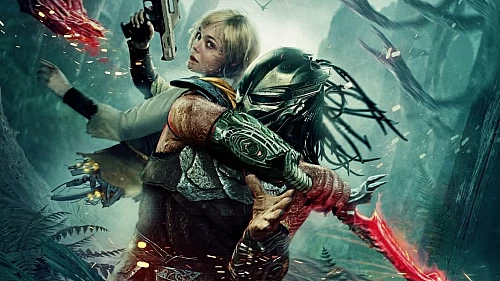State-of-the-art technology will allow Hollywood to make movies faster and cheaper, but the creatives should keep a hand in to avoid a cookie-cutter approach.
AI Set to Disrupt Film Production
The fourth industrial revolution (4IR) heralds a radical change in all three of our most-pressing realities – digital, physical and biological. This technology-driven era, of which we’re most definitely right on the cusp, is likely to disrupt the global job market through artificial intelligence (AI) software outlay, which will increasingly automate every manual process out there to bring holistic efficiency to our lives.
We will encounter attendant-free grocery stores, where items are scanned and credit card details taken – possibly without us even noticing; become accustomed to living in homes and occupying offices where everything, from lights and air-conditioning to music and coffee-making, takes place at the touch of a smart-device button (or before!); and feel more secure about betting online, when we know the AI software used can detect credit card fraud almost instantaneously, simply by comparing what we did today with our usual online behaviour.
If you do a fair amount of gaming in your spare time – or even create and test online games as a source of income – you will already have a fair grasp of how AI stands to change one important global industry in the not too distant future. As Sol Rogers, CEO and founder of Emmy-nominated immersive content studio REWIND enthuses in a recent Forbes.com interview, “What if every kid could have the tools in their bedroom? We all remember playing with toys when we were kids. It was an infinite world of imagination where anything was possible! What if making movies [could become] that easy?”
Yes, writes Alissa Wilkinson in a movie-making piece on Vox.com: “The long-awaited future in which computers transform our humanity has undeniably arrived. And there’s at least one very specific realm in which that future is steadily becoming more and more of a threat [or delight?]: the movies.”
An-ti-ci-pa–tion
If the movie-making industry dances for you, you’ll undoubtedly think these developments are incredibly good news. New technology will allow filmmakers to create shots rapidly, based on gut instinct, without the need to schlepp heavy equipment around or put the creation of their best work squarely in technical hands. Oscar- and Emmy Award-winning visual effects/virtual production supervisor, Ben Grossman, likens the concept of virtual production to a real-world “undo” button. Cost-cutting will also happen across the movie-making genre. “We [will] build the assets of the film in a game engine … virtually,” enthuses Grossman. And when actors are injected onto this” virtual canvas” – basically a high-resolution LED screen or movie-stage Holodeck – they can then be “shot in any direction giving filmmakers almost infinite control.”
AI also assists filmmakers to bring these virtual worlds to fruition so much faster; it can act like a virtual crew, anticipating the areas in which filmmakers are likely to need help; and can even inject personality into virtual characters, rendering them more streamlined to direct. Grossman lists additional benefits as follows:
- team members can bring their unique skills to a new table;
- filmmakers can make quick about-turns to the “real-world” unfolding before them on the digital screen;
- film crews can apply their decades-old experience to new interfaces;
- months of post-production work can now take place in a couple of hours;
- editing can happen in advance of sending a scene to those employed to make it look more realistic; and
- a more superior product can be put together in less time, and more affordably, because AI helps eliminate many of the steps and iterations of yesteryear.
Concerns emerge
If you’re a tad worried that aspects like script, character choice and favoured genre will begin falling into the “cold, steely hands of machines and algorithms”, the new AI contribution to filmmaking may not work for you. Also, if you’re highly individualised and believe in giving credit to a person, you’ll want “creative, accomplished, and opinionated artists” to be able to leave their mark on the final product.
Unfortunately, Hollywood movies are expensive to make and need to lodge themselves, as far as interest go, solidly between what pleases many and challenges few. Being “visionary” often doesn’t cut it; it can take decades for those who are remembered fondly, say for their efforts in having branched out bravely into unexplored territory in the sci-fi realm, as just one example, to fully be appreciated.
Along this trajectory, one wonders what the reception will be, popularity wise, of the upcoming Vietnam movie “Finding Jack”, in which only James Dean – who incidentally died in 1955 – could apparently cut it in the lead role. Caution should surely be exercised in the filmmaking genre to avoid us getting to the point where no actor or actress need show up for a day of “shooting”; and those being cast only need to give their permission – or have it conferred on the film authorities via those who manage their deceased estate – to become “endlessly and infinitely digitally generated”.
Do we want the entertainment business to become a function of churning out what the human populis apparently already likes to see – without much capital outlay or intellectual stimulation? If that is the case, says Wilkinson, how about simply settling down on your sofa with a beverage and a snack, selecting the genre, actors and plot upfront, and – with a click of the remote – taking in a movie with the exact same features you’ve just selected. Why is this scary? Because art is there to help us take risks, to challenge us, to make us think, and to bring us out of our comfort zones so that we can confront our skeletons and emerge – from those darkened lounges or cinemas – with more preferable human characteristics to offer up as a result of the confrontation and the thinking time.
Because, as a species, we seek comfort zones and familiarity inherently, that should surely not be what we get fed on a spoon through our easiest access to art – those small or big screen movies. This means the small guy (yes, you at home!) should ideally select your movie-watching fodder with more bravery than ever before – or risk “the algorithm” lulling you into a dangerously complacent place. And a solution also lies in the attitude of those inputting the software, who should ideally aim to steer the industry a little bit more towards wonder and inspiration, and a little bit less towards unthinking repetition and repose.

Stranger Things Season 5 Episode 7 suffers big drop in ratings ahead of the series finale!
Season 5 saw a sharp drop in ratings at the conclusion of Episode 7 – The Bridge, with many fans disappointed by drawn-out scenes and questionable writing.

Weta Workshop share King Kong concept art to commemorate film's 20th anniversary!
Take a look back at some awesome early artwork created for Peter Jackson's iconic King Kong movie!

Disney just signed a deal with OpenAI to let Sora curate videos using Star Wars, Marvel, Pixar & other Disney characters.
Disney have made headlines by partnering with OpenAI to let the platform have access to Disney properties and characters from Star Wars, Marvel, Pixar and more.

FROM Season 4 is aiming for an early 2026 release date!
The mind-bending sci-fi thriller FROM ended season 3 on some major cliffhangers. A fourth season is on the way early next year!

Lights, Drama, Action! Paramount launch aggressive bid to take Warner Bros. away from Netflix!
Paramount have made a big swing, offering $108 billion for the acquisition of Warner Bros. and are now going to WBD shareholders to sway the vote!


